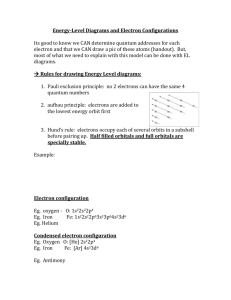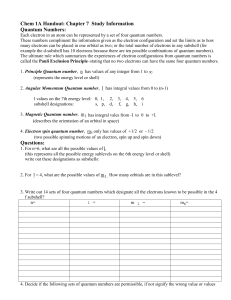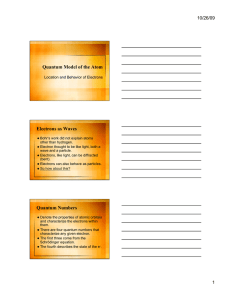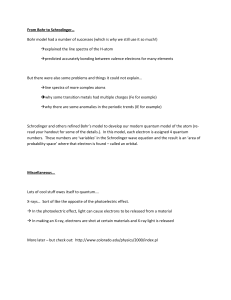Summary
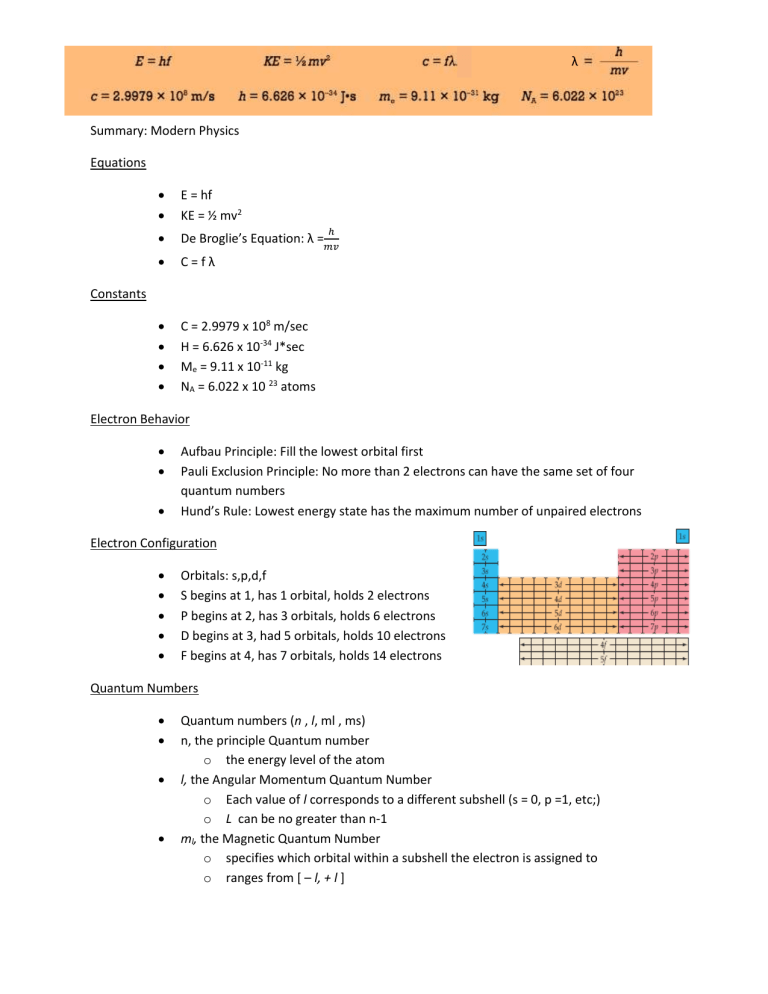
λ
Summary: Modern Physics
Equations
E = hf
KE = ½ mv 2
De Broglie’s Equation: λ = ℎ 𝑚𝑣
C = f λ
Constants
C = 2.9979 x 10 8 m/sec
H = 6.626 x 10 -34 J*sec
M e
= 9.11 x 10 -11 kg
N
A
= 6.022 x 10 23 atoms
Electron Behavior
Aufbau Principle: Fill the lowest orbital first
Pauli Exclusion Principle: No more than 2 electrons can have the same set of four quantum numbers
Hund’s Rule: Lowest energy state has the maximum number of unpaired electrons
Electron Configuration
Orbitals: s,p,d,f
S begins at 1, has 1 orbital, holds 2 electrons
P begins at 2, has 3 orbitals, holds 6 electrons
D begins at 3, had 5 orbitals, holds 10 electrons
F begins at 4, has 7 orbitals, holds 14 electrons
Quantum Numbers
Quantum numbers (n , l, ml , ms) n, the principle Quantum number o the energy level of the atom
l, the Angular Momentum Quantum Number o Each value of l corresponds to a different subshell (s = 0, p =1, etc;) o L can be no greater than n-1
m l
, the Magnetic Quantum Number o specifies which orbital within a subshell the electron is assigned to o ranges from [ – l, + l ]
m s
, The Spin Quantum Number o specifies angular momentum of the electron o either + ½ or – ½ o indicated by the spin up the last electron (up spin + ½ down spin – ½ )
Terminology
Isoelectric: atoms having the same electron configuration
Paramagnetism: Attraction to a magnetic field. The atoms of paramagnetic substances contain unpaired electrons. Paramagnetic substances increase in mass when exposed to a magnetic field
Diamagnetism: Repelled by a magnetic field. Diamagnetic substances contain paired electrons
Periodic Trends
Atomic radii decreases, ionization energy increases, electron affinity increases, and electronegativity increases across the rows
Atomic radii increase, ionization energy decreases, electron affinity decreases, and electronegativity decreases down a column
Oxidation
Loses an Electron – Oxidized (ex: Fe +2 )
Gains an Electron- Reduced (ex: S -3 )
Oxidized molecule donates electron to reduced molecule

